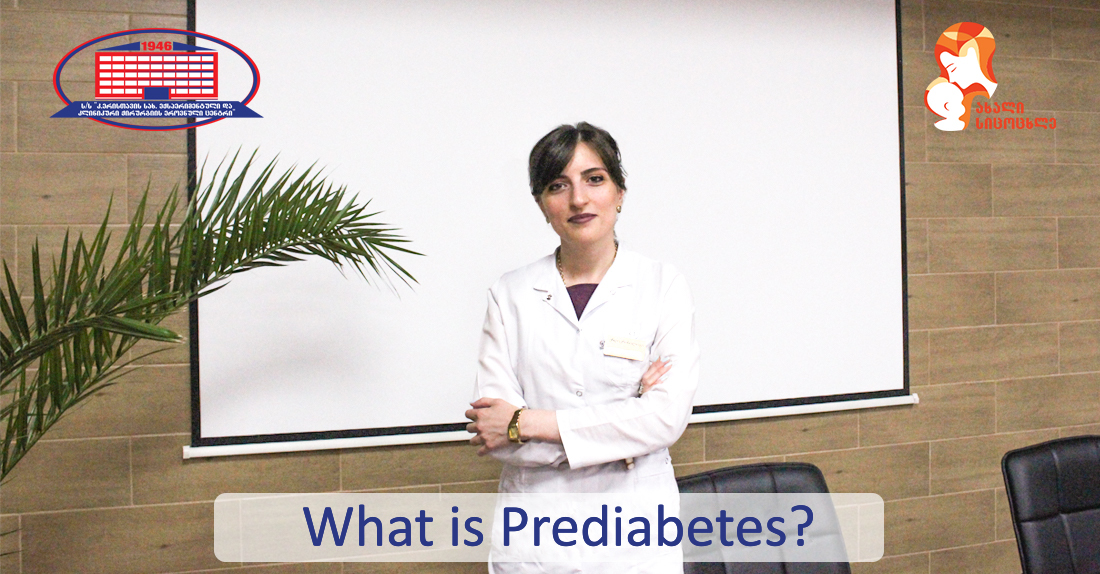
Diabetes is a severe and cruel disease.
Nowadays, prediabetes and disease management gets more attention in modern medicine because it is a prediagnosis and a condition with the possibility of developing diabetes.
Diabetes prevention is feasible only in case of a timely and effective diagnosis of prediabetes, appropriate medical intervention, and further observation.
When we talk about the prevention of diabetes, we mean type II. The pathogenesis and conditions of type 1 are somewhat different and require other approaches.
Endocrinologist Ana Mamasakhlisi of the clinic "New Life" of National Center of Surgery discusses prediabetes.
– Dr. Ana, why is timely detection of prediabetic condition important?
– Prediabetes precedes diabetes by approximately 7-10 years and therefore creates conducive conditions for developing complications in the body.
In the world, 425 million people are affected by diabetes. Unfortunately, one out of two does not know that s/he has a disease. 90% of diabetic patients are diagnosed with type II diabetes that develops more frequently in people over 40 years old. Moreover, in most cases, disease doesn’t display symptoms for a long time.
Unfortunately, the number of diabetic people is expected to increase worldwide – scientists fear that by 2045 the number will reach 628 million and hence, preventing measures are extremely important.
– What causes prediabetes?
– Prediabetes has the same risk factors and causes as diabetes. During prediabetes, glycemia (blood sugar) levels are higher than normal, albeit not high enough to be diabetes. Prediabetes develops when the body cannot produce or use enough amount of hormone insulin. Insulin is necessary to transport glucose. Keep in mind that glucose is a source of energy.
Commonly, an increase in glucose level is accidentally detected on a screening test. In most cases, patients are surprised and cannot believe they have health problems because they don’t suffer from symptoms of this disease.
– As you’ve stated, in most cases prediabetes proceeds asymptomatically, but what kind of symptoms should the reader pay attention to if the disease still displays signs?
– In some cases prediabetes might be characterized with certain symptoms, for example:
- Unbearable hunger;
- Trembling when hungry;
- Weight gain;
- Fatigue;
- A strong craving for sweets.
–Please indicate the risk-groups of disease development. What kind of risk-factors cause this condition?
–According to the 2019 recommendations of the American Diabetes Association (ADA) following are risk-actors of prediabetes or/and type II diabetes:
- The first risk-factor of prediabetes development is excess weight (Body Mass Index > 25 kg/m2) and especially when excess fat accumulates in an abdominal area;
- Insulin resistance and obesity (Body Mass Index > 30 kg/m2). The more person weights, more resistant are cells to insulin;
- Physical inactivity, sedentary lifestyle
- People older than 45 should be more attentive as the risk of diabetes increases with age. Albeit recently there has been an increase of prevalence of type II diabetes in children and adolescents;
- Family history of type II diabetes (When first degree relatives, parents and siblings have diabetes);
- Ethnic groups should be taken into account. For example, people of color, African-Americans, Latino Americans have a higher prevalence of diabetes development;
- Gestational diabetes (developed during pregnancy);
- Women who deliver a baby weighting > 4 kg;
- Arterial Hypertension, i.e., high blood pressure;
- Dyslipidemia (a disorder of cholesterol metabolism);
- Polycystic ovary syndrome and its relationship with insulin resistance should be taken into consideration. During this time, a high number of cysts develop in the ovaries, and one of the causes is a prediabetic condition. Polycystic ovary syndromeis characterized by irregular menstruation, excess hair growth, and obesity.
In the case of one or more risk factors of prediabetes, the doctor might find it necessary to carry out annual glucose monitoring. Moreover, regardless of whether the patient is overweight or carrier of a risk factor, the doctor will still require glucose test if the patient is 40-45 or older. In the case of normal results, it is recommended to repeat testing at 3-year intervals. This is a smart and effective way of detecting prediabetes. Diabetes has so many severe complications that alertness is necessary at least to identify a slightly impaired glucose level.
Besides diabetes, prediabetes can be considered as one of the risk-factors for cardiovascular, Alzheimer's, and cancerous diseases.
The risks of developing gastric, colorectal (large intestine and rectum), liver, pancreatic, breast, and endometrial cancers are higher if the person has prediabetes.
–What methods are used for the treatment of prediabetes?
– The primary and essential method of treatment is changes in lifestyle - decreased initial weight by 7%, increased physical activities (fast-paced walking at least 150 minutes a week),healthy eating, no tobacco.
If the target could not be reached even after a change in lifestyle, it’s recommended to undergo a medication therapy – undoubtedly effective method of preventing diabetes.
Remember, timely intervention is the best way to prevent disease.
Wish you health!






